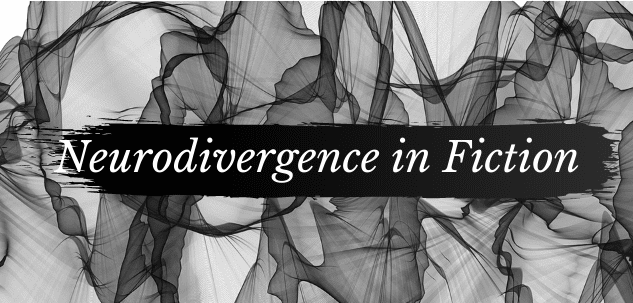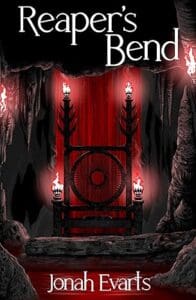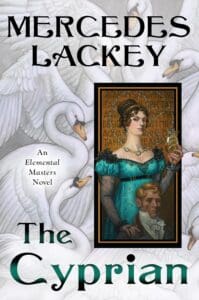
Hello all, and welcome to this week’s article for FanFiAddict’s series on Neurodivergence in Fiction. I cannot understate how appreciative I am for the overwhelming amount of support and enthusiasm I have seen for this series of mine; thank you! For the next several months we will be bringing you a guest post every Wednesday from a neurodivergent author. This will hopefully highlight some of the challenges that come with writing for a largely neurotypical audience, while also giving valuable insight to the craft itself and providing a window into the neurodivergent experience — at least through the lens of fiction. For this week’s article, Ada Hoffman has provided us with a reprint of part one of her publication, “Autism, Writing, and Craft.”
On to the article!
I’ve been chewing on the idea that characteristic aspects of autistic writing are different from neurotypical writing. I think of it whenever I look at essays like Matthew Salesses’ “25 Essential Notes on Craft.” We talk about this topic in terms of authors of color trying to get by in a very white, American-dominated publishing industry. Every once in a while I hear assertions that something like this applies to neurodiverse groups, too, but I rarely see a deep unpacking of what that means.
Marginalized people of all stripes have to make difficult choices about what audience to appeal to and why. Trying to write in a way that appeals to the mainstream can feel like it strips away something important about the work. And, indeed, the mainstream may never be satisfied, no matter how we try to appeal to them. (The late Xan West had a really good article about this, from a physical disability perspective, called “What To Take In” – CW that the article is about erotica.) Or the mainstream may actively refuse any nuance that goes against the stereotypes that they know (see this classic tweet thread). Autistic people are by no means immune from these pressures.
But I want to talk less about the pressures themselves, and more about the craft tendencies that may be subject to them. What does autistic writing actually look like, and in what ways does it differ from the mainstream? If we are asking the mainstream to be more tolerant and curious about an autistic writing style, what is it that we are asking them to be more tolerant and curious about?
(Note: There is significant overlap between autism and other forms of neurodivergence, as well as mental illness. When I contrast “autistic writing” with “neurotypical writing,” I do not mean to imply that everyone is either autistic or NT, but rather, I am using “neurotypical writing” to refer to the mainstream, from which autistic writers as well as many others can be alienated. Anyone who finds this post useful or relatable is welcome to do so.)
So when we say that autistic writing can be different from neurotypical writing, that there are aspects of craft designed to please autistic brains more than neurotypical ones, what exactly does that mean?
1. “Relatable” Characters
There’s so much mainstream writing advice about how to create characters, much of which makes no sense to me. Characters have to be “likable” or “relatable” or “compelling” – they have to be characters a reader would want to spend time with – but they also have to have “flaws”! But not too many “flaws,” or the wrong kind of “flaws,” or else we have to think about what message we’re sending to an impressionable reader.
This way of thinking about characters is pretty foreign to me. Do neurotypicals look at people in real life and break them down into a list of adjectives with value judgments attached? Maybe they do! I don’t. But either way, you might notice that this advice is based on what neurotypical people like and relate to. If we’re meant to write characters a reader would want to spend time with, who is our reader?
Most autistic people have painful memories of neurotypical people not wanting to spend time with us because of harmless autistic traits – atypical posture and eye contact, atypical language, atypical interests and so on. (And some of us have been painfully ostracized because of harmful traits – maybe we used to engage in behaviors that actually hurt people, when we were young and didn’t know better, and it took a while for us to understand what we were doing wrong. For those of us who’ve had that experience, or who’ve been made to believe that our autistic traits were harmful to others even when they weren’t, fictional characters who are “bad people” can feel very relatable!)
So we’ve gone our whole lives being told that we are not the kind of people others will want to spend time with, and we’re told that the characters in our stories should be the kind of people others will want to spend time with, but we’re also told that we should “write what we know” or be #ownvoices and create characters who are like us. How do you square that circle? You can’t.
It’s very natural if, instead of following this contradictory advice, we choose to make characters who are relatable to ourselves.
I just said I hate thinking of characters in terms of a list of traits, but I feel this discussion will be too abstract if I don’t try to make one. Here are some traits I suspect are relatable to a lot of autistic people: a strong sense of justice, a sense of fear or overwhelm about the world at large, a sense of alienation from other people, a “logical” way of approaching problems, a highly developed skill or strong interest in something, intense reactions (positive or negative) to the sensory environment, a weakness to being manipulated by others or to thinking poorly of themselves. I’m not saying all good autistic characters need to have all these traits. But these are traits I see coming up a lot in autistic writing, and in characters in media that autistic people relate to, whether the characters themselves are canon autistic or not.
Do neurotypical readers relate to these things? I don’t know. My guess would be “some of them.”
But if we’re writing to be relatable to autistic readers, then a neurotypical reader is going to be hard pressed to tell us how to do it well. This can leave us in a bind in terms of feedback, revision, and learning how to write our characters well.
When I was working on The Outside, the characters of Akavi and Ev came to me quite easily – both of them were larger-than-life, had a strong mental “flavor” for me, and were already established characters in a D&D game I’d been playing. It was much harder to create Yasira, the protagonist caught up in Akavi and Ev’s machinations. A lot of my alpha readers didn’t like Yasira – they said that she felt “flat,” or didn’t seem to have enough emotions, or that she needed to think about other people’s feelings more. But it was difficult for me to put this advice into practice, or even to envision what Yasira was going to look like if I did.
It took a very astute autistic reader, Elizabeth Bartmess, to pinpoint what was really going on. Yasira felt flat, not because she was too autistic, but because she was depressed. The experience of being depressed or burned out is, in fact, a very flat one! Elizabeth pointed out some reasons why it might be realistic for Yasira to be depressed at this stage in her life, and they listed parts of Yasira’s characterization (the way she is/isn’t excited about her work, for instance) that seemed to be affected by depression.
Armed with this knowledge, I was able to revise and make it clearer why Yasira was responding (or not responding) to events in the way that she did, as well as adding more nuance to the responses that existed. This was a difficult, scary process – it forced me to confront not only Yasira’s emotional problems, but also some of my own.
I genuinely think that a neurotypical reader or editor could not have given me character advice that worked this well.
I’ve never had an editor ask me to rewrite a character to make them act more neurotypical, but it’s an experience many of my autistic friends have had, and it’s an immensely painful one. It combines the pain of having something important about your creative work taken from you with the pain of knowing deep down that you’ll never belong.
The point is not that autistic people are always right, or that we should never have to revise our characters – it’s that, very frequently, only an autistic reader is “on our level” enough to give advice that helps instead of hurting this way.
Which brings us to…
2. Agency
“Agency” is a huge aspect of character, often described as an essential component of any good story. We want a protagonist who is constantly doing something, working towards some specific goal that they strongly desire. We want the plot to be about obstacles that they encounter, and eventually overcome, in pursuit of this goal. Many of us have been told, in writing classes or elsewhere, that this structure of a character with agency overcoming obstacles is not only desirable but that it forms the very essence of what a story is.
In fact, this idea of agency is a very Western idea, and it is not inherent to every kind of storytelling. Salesses’ essay does a good job explaining how in many cultures – especially for groups of people with a collectivist attitude, or for groups that have been historically disempowered – the Western idea of agency is not useful. Sometimes a story is about enduring things you can’t change. Sometimes it is about being one small part of a larger process.
I think that autistic people, especially autistic women and those who were raised as girls, face an additional difficulty writing agency into stories – many of us have been taught it’s not okay for us to have agency. Agency springs not only from structural power but from being a person with feelings, desires, and preferences – a person who wants something for its own sake. But many autistic people are taught from an early age that our preferences are always wrong or even hurtful. We can be taught these things by explicit, structured therapy or we can absorb them more informally from the attitudes of the people around us.
Even if we do want to write a traditional Western-style story with an active protagonist, it takes a lot of work to overcome these lessons. My early attempts at short stories were filled with very passive protagonists who had bad things happen to them and were sad and that was the end of the story. Even now, I find it easier to imagine agency and power in the hands of villains or “bad people,” like Akavi and Ev, than “good” ones.
Neurotypical readers and editors are often not very good at helping us with this problem, because they are not very sympathetic to the reasons why we find it difficult. In my early writing days, I was often told that my characters were “boring” or “whiny” or “weak.” That makes it sound like the character picked the wrong options from a list of character traits. But the real problem was something subtler and deeper: I literally couldn’t conceive of my protagonists taking the kinds of bold, aggressive actions, in the face of their circumstances, that a neurotypical reader wanted. I had to take a hard look at my own traumas and my sense of learned helplessness before I could begin to address this.
And not every autistic author wants to address this, nor should they. Some authors prefer the kind of story where the character intentionally isn’t bold or aggressive in pursuing their goals; where the focus is on sensory or emotional experience rather than on “getting things done.”
A great example of this approach is Parét from R.B. Lemberg’s story “Geometries of Belonging.” Parét, a healer, is both depressed and deeply submissive. The story opens with a rich sensory description of the room that he’s in, doing nothing in particular and pursuing no particular goal. This kind of stillness, quiet, and attention to his senses are soothing for Parét and they tell us what kind of person he is. Xan West (again) wrote a wonderful essay about “Geometries of Belonging” and what it meant to them to see a POV character like Parét in a fantasy story – someone who moved slowly, allowing both the story and the reader to progress at a languorous, comfortable pace. I strongly suggest reading the whole essay. For mainstream readers, including some autistic readers, a slow pace is “boring” – but for autistic readers like West, it can be deeply affirming and more pleasant than a faster pace. An exclusive focus on agency and action can erase this experience.
This essay is turning out to be very long, so I am going to split it into 3 parts. I have a lot to say, and we’re definitely not done! Part 2 will come out next week and will talk about emotions, communication, alexithymia, echolalia, and wordplay. Part 3, on the 21st, will talk about infodumping, and then it will wrap up with some of my thoughts about what exactly we, as autistic authors trying to learn our craft, can do about all this.
About the Author

Ada Hoffmann is the author of the space opera novel THE OUTSIDE, the collection MONSTERS IN MY MIND, and dozens of speculative short stories and poems. Ada’s work has been a finalist for the Philip K. Dick Award (2020, THE OUTSIDE), the Compton Crook Award (2020, THE OUTSIDE), and the WSFA Small Press Award (2020, “Fairest of All”).
Ada was diagnosed with Asperger syndrome at the age of 13, and is passionate about autistic self-advocacy. Her Autistic Book Party review series is devoted to in-depth discussions of autism representation in speculative fiction. Much of her own work also features autistic characters.
Ada is an adjunct professor of computer science at a major Canadian university, and she did her PhD thesis (in 2018) on teaching computers to write poetry. She is a former semi-professional soprano, tabletop gaming enthusiast, and LARPer. She lives in eastern Ontario.




This is phenomenal, Justin. I am continually impressed with your posts.
Oh, wow! Thank you so much! 😭😭😭
Thank you so much for this posy series!
I look forward to Ada Hoffman’s follow up posts. This one was brilliant.
I’m so glad you liked it and I’m immensely grateful to Ada for offering it up to be a part of the series. Parts 2 and 3 are coming over the next two weeks!
I look forward to reading the next posts!